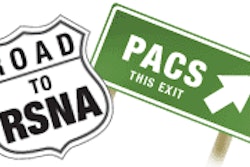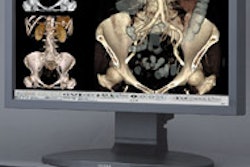CHICAGO - One of the benefits of PACS is its capability to streamline the radiologist workflow process. For many institutions, this has resulted in a measurable increase in radiologist efficiency. Although shifting from a film to a digital image environment provides greater productivity, taking paper out of the picture can yield a nearly sixfold increase in time savings, according to researchers from the University of Pittsburgh Medical Center in Pennsylvania.
"Going paperless can increase accuracy, and develop increased efficiency for both the radiologist and the technologist," said Dr. Jonathan Mates, who presented the results of his team's research at the RSNA meeting on Sunday.
Mates said that many radiology departments still use paper for technologists to signal the radiologist that studies have been completed, or to provide additional information about the patients.
The group performed a workflow analysis of radiologists in the reading room and identified elements of the paperless environment, such as integrated DICOM worklists, speech recognition technology, and structured reporting. Using the analysis as a model, they timed radiologists at two institutions with the same PACS vendor; one institution had a paperless environment, while the other had a paper-driven environment.
The team also compared individual radiologists when using either paperless or paper-driven models of image interpretation and dictation, Mates said. To evaluate the relative benefits of PACS versus the paperless environment, the group measured reading times for individual radiologists in a film environment and a PACS environment.
They found that the radiologists in the survey spent approximately the same amount of time interpreting images. However, the time spent on associated tasks such as patient identity confirmation and dictation initiation took a significantly greater amount of time in a paper-based environment, according to the research findings.
Mates said that a study took, on average, 30.4 minutes for radiologists practicing in an environment where they entered patient and dictation information via typing on a keyboard. For radiologists who worked in an environment where patient information could be input by barcode, studies took approximately 13.7 minutes. In a completely paperless environment, a study took an average of 5.9 minutes.
He noted that time savings was a function of both batch size, the number of studies read per session, and of the modality being interpreted. Conventional radiographs received greater benefit than cross-sectional modalities in the group's study.
Mates said that when paper-driven PACS environments were compared to paper-driven film environments, the improved efficiency derived from PACS was slightly less than the improved efficiency derived from the paperless environment. This observation led the team to conclude that eliminating paper-based workflow may yield efficiencies as great as those derived by the elimination of film-based image diagnosis.
"PACS upgrades such as integrated dictation and integrated clinical information may be as important as the PACS itself in improving the workflow of the reading room," Mates said.
By Jonathan S.
Batchelor
AuntMinnie.com staff writer
November 29, 2004
Related Reading
RIS and PACS -- together at last, June 11, 2004
Electronic exam ordering offers pros, cons in PACS, January 6, 2004
RIS-PACS integration delivers improved interpretation, reporting times, December 1, 2003
HHS removes obstacles to paperless health system, July 2, 2003
UCLA hospital to be paperless and filmless, November 30, 2000
Copyright © 2004 AuntMinnie.com



















